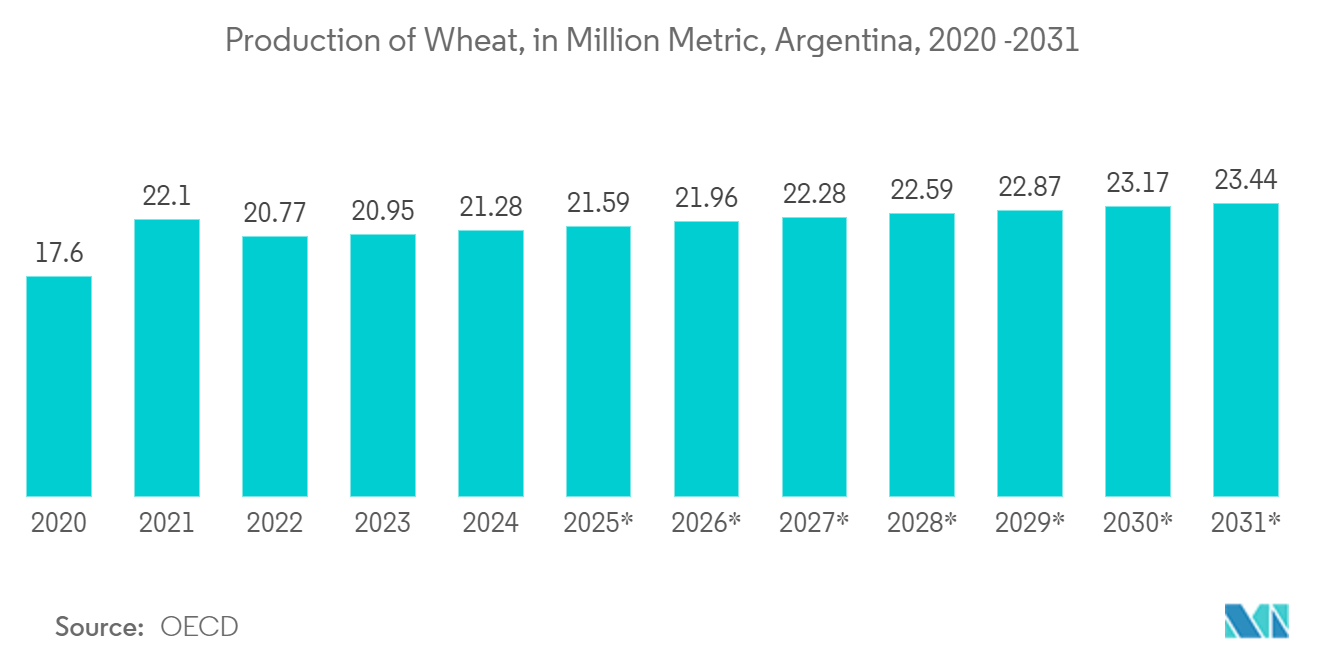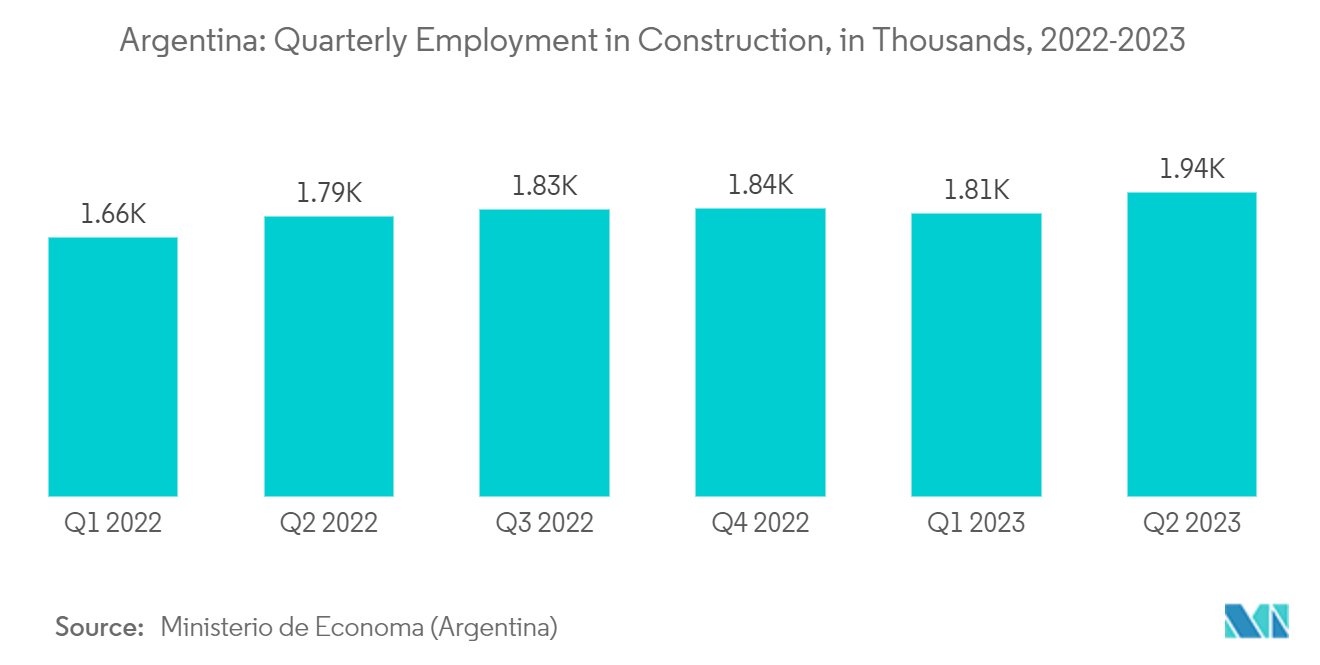Market Trends of Argentina Satellite Imagery Services Industry
Natural Resource Management is Expected to Significant Share
- Satellite imaging is helping farmers conduct crop forecasting and manage their agriculture production by utilizing multispectral imagery. The data generated by these methods is then used in GIS management systems to analyze and visualize agricultural environments and workflows. However, free tools, like Google Earth Pro, are helping regional farmers identify areas in fields requiring a closer analysis to decide if additional irrigation or fertilization of the crop is required.
- It is highly essential to understand how forests in climate transition regions respond to climate change. Satellite imaging can help contain the global climate change that has a large effect on the structure and function of vegetation. As officials in the industry are moving from undertaking only corrective measures toward prevention, the market studied may witness huge growth rates. For coastal management researchers and scientists, satellite imaging provides data for the assessment and analysis of water temperature, salinity, phytoplankton, hydrology, shoreline changes, bathymetry, soil moisture, and potential threats to coasts.
- With the advancement of technology, players in the satellite technology space are focusing on new innovations. For instance, Satellogic, a company based out of Argentina, has a target of obtaining a 1-meter resolution image of the planet every week, which can provide precise measurements, particularly in water usage. The agricultural sector can benefit by gathering updated information, ranging from individual fields to entire farm operations and beyond.
- However, for large areas with pan-sharped vegetation indices, resolutions of 30 cm, 40 cm, or 50 cm are required. Thus, the satellite is expected to use these high- and medium-resolution satellite images, particularly for precision agriculture, with minimum commitments of 50-100 km² per area. Major applications within this segment are assessing deforestation and managing coastal lines, driven by commercial logging, forest farming, fuelwood gathering, agriculture, and pasture clearance. Furthermore, changing conditions due to urban sprawl, as well as increasing forest fragmentation, led to an increasing focus on forest productivity, reforestation, forest health, conservation of soil, water resources, and nutrient cycling.
- According to the Organization for Economic Co-operation and Development (OECD), The production volume of wheat in Argentina was forecast to continuously increase by 2.7 million metric tons (+13%) within the next years. Therefore, the production volume is estimated to amount to 23.44 million metric tons in 2031. Production is the process of manufacturing goods. The output is generally measured in volume. Image data is collected and translated into management systems for crop health and better production targets using high-resolution, multispectral satellite or aerial photography and artificial Intelligence (AI), machine learning (ML), and computer vision (CV) algorithms.

Construction Segment is Expected to Drive the Market
- Construction progress can be monitored with regular satellite imagery snapshots of the site from above. Managing this process through organizing drone or aerial imagery can be both expensive and logistically challenging, particularly across various projects. Therefore, using satellite imagery across such projects can be a cost-effective solution. Additionally, monitoring many construction sites' progress can be costly and time-consuming. However, having an updated record of images from above can provide project managers with an easy and quick insight into the progress of their project, which they can use for internal reporting.
- The key stakeholders engaged in large-scale construction projects, such as developers or project managers, are often based in separate locations in the country. Having access to up-to-date satellite imagery of these projects helps these stakeholders monitor their projects easily online. Satellite imagery can benefit various stages of the construction process, equipping key stakeholders with valuable data to achieve informed planning and decision-making. Real estate developers use this imagery when searching or evaluating the site; engineers and architects use it to give their designs an up-to-date geographical context; and project managers consult images over time to monitor the build process.
- The average large construction firm has multiple projects running simultaneously in the country. Satellite images provide an economical, accurate, and rapid means of obtaining a quick assessment for any significant construction or engineering project, e.g., airstrip, power plant, sewer, bridge, dam, industrial park, canal, and storm utilities. For large construction companies undertaking projects in the country, satellite imaging is becoming incredibly important. Extensive surveys and explorations of potential building sites must be undertaken before any work begins. Companies need detailed images of their sites and surrounding areas regularly to better understand the context.
- According to the Instituto Nacional de Estadística y Censos Argentina of 2023, the construction sector employed 1.94 million people in Argentina, a figure that is quite higher than a year earlier, The images generated from aerial imaging are used to market the construction projects. These images can be utilized to create 3D BIM models and shared with stakeholders to showcase the viability of the projects. The benefits of aerial imaging technology are resulting in the efficient management of energy and resources, which is restraining the market growth.
- As the market continues to evolve, significant firms in the country are increasingly relying on technologies such as AI and Machine learning to scan daily satellite imagery, detect and classify items, and track even minor changes. Artificial intelligence (AI) primarily helps extract valuable insights from the rapidly growing satellite imagery, thus presenting solid AI-driven data analytics for various applications. Technologies like machine learning offer better clarity and visualization by interpreting the images from different vantage points. Artificial intelligence (AI) primarily enables extracting valuable insights from the rapidly growing commercial satellite imagery.


